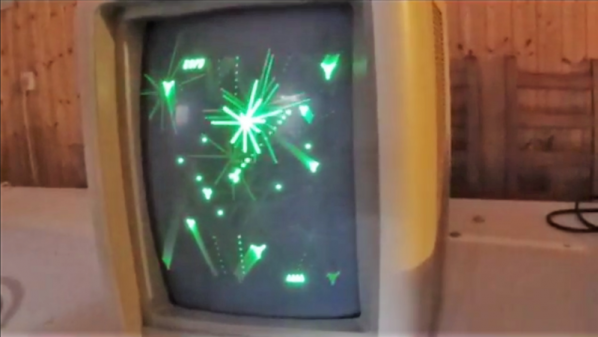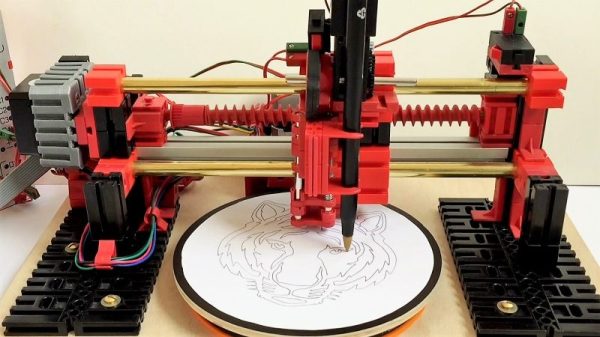Unlike most old consoles, the Vectrex is unique for having a vector-based display. This gives it a very different look to most of its contemporaries, and necessitated a built-in display, as regular televisions aren’t built to take vector signals. Not one to be limited to the stock screen size, [Arcade Jason] decided the Vectrex needed a projection upgrade, and built exactly that.
The build relies on a lens that [Jason] salvaged from an old rear-projection TV. These units used CRTs with big lenses which projected the image onto a screen. That’s precisely what is happening here, with a vector display replacing the CRT used in the original TV. The vector display itself used here is a tube from a small black and white TV set, which [Jason] modified to use a Vectrex yoke, making it capable of vector operation.
Through some modification and careful assembly, [Jason] was rewarded with a wall-sized display for his Vectrex console. This is demonstrated with some beautiful glowing vector demos, accompanied with appropriate bleep-bloop music, as was the style at the time. The Cantina band is a particular highlight.
We’ve seen [Jason]’s vector hacks before, too – like this Asteroids machine modified to display in color. Video after the break.
Continue reading “The Vectrex Projector We’ve Been Waiting For”



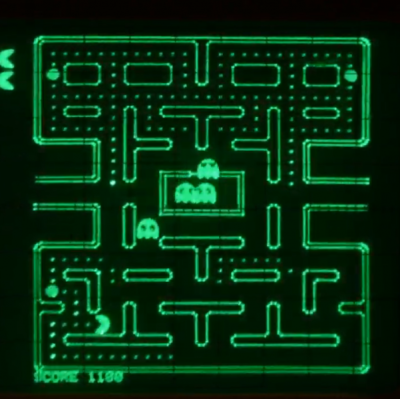 Using a CRT oscilloscope in X-Y mode as a vector display, the console faithfully reproduces some classic games, most of which, curiously enough, were not originally vector games. There are implementations of the Anaconda, RetroRacer, and AstroLander minigames from Timesplitter 2. There are also versions of Pac-Man, Tetris, and even Super Mario Brothers. Most of the games were prototyped in JavaScript before being translated into assembly and placed onto EEPROM external cartridges, to be read by the ATMega128 inside the console. Sound and music are generated using the ATMega’s hardware timers, with a little help from a reverse-biased transistor for white noise and a few op-amps.
Using a CRT oscilloscope in X-Y mode as a vector display, the console faithfully reproduces some classic games, most of which, curiously enough, were not originally vector games. There are implementations of the Anaconda, RetroRacer, and AstroLander minigames from Timesplitter 2. There are also versions of Pac-Man, Tetris, and even Super Mario Brothers. Most of the games were prototyped in JavaScript before being translated into assembly and placed onto EEPROM external cartridges, to be read by the ATMega128 inside the console. Sound and music are generated using the ATMega’s hardware timers, with a little help from a reverse-biased transistor for white noise and a few op-amps.
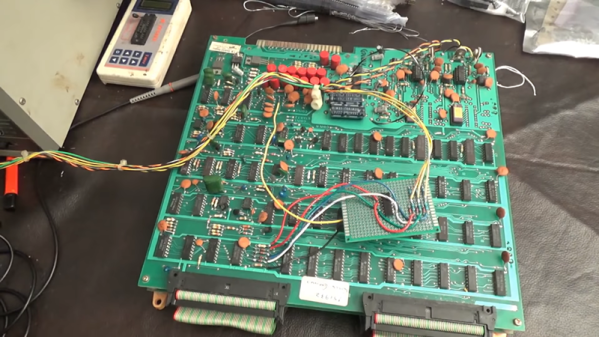

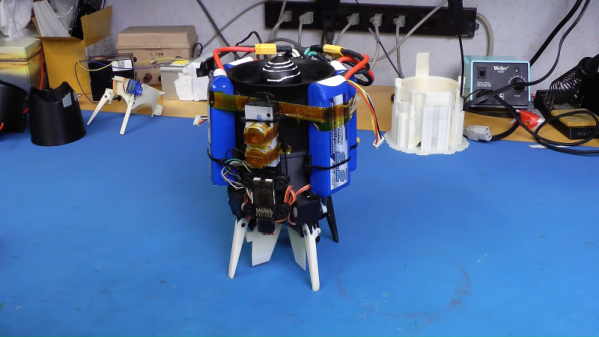
 Whatever we choose to call it — builder [tesla500] dubbed it the simultaneously optimistic and fatalistic “Ikarus” — it’s really unique. The monocopter is built around a 90-mm electric ducted fan mounted vertically on a 3D-printed shroud. The shroud serves as a mounting point for the landing legs and for four servos that swivel vanes within the rotor wash. The vanes deflect the airstream and provide the thrust vectoring that gives this little machine its control.
Whatever we choose to call it — builder [tesla500] dubbed it the simultaneously optimistic and fatalistic “Ikarus” — it’s really unique. The monocopter is built around a 90-mm electric ducted fan mounted vertically on a 3D-printed shroud. The shroud serves as a mounting point for the landing legs and for four servos that swivel vanes within the rotor wash. The vanes deflect the airstream and provide the thrust vectoring that gives this little machine its control.